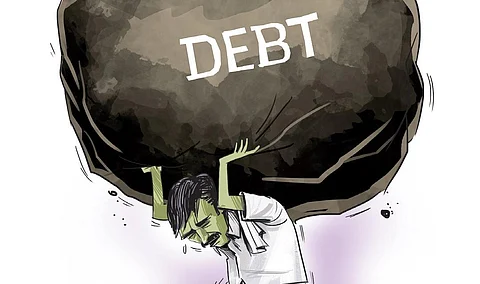

NEW DELHI: The country’s external debt-to-GDP ratio at 18.6% at the end of June quarter was lowest in over 12 years even as the external debt in absolute terms increased by $4.7 billion to $629.1 billion during the quarter.
The external debt-to-GDP ratio fell to 18.6% by June-end 2023 from 18.8% at March-end. The government’s external debt at June-end stood at $132.8 billion, showing a slight decline over the March-end figure of $133.3 billion. The government’s external debt-to-GDP ratio has dropped to 3.9% in June-end from 4% in March-end. Non-government debts rose 1% to $496.3 billion by June-end from $491 billion at the end of March quarter.
External debt comprises loans (multilateral and bilateral credits and bank loans) accounting for $207 billion of total $629 billion. Other major components include currency and deposits ($144 billion), trade credits ($119.3 billion) and debt securities ($105.7 billion). Dollar-denominated debt remained the largest component of the external debt, with a share of 54.4% by June-end, followed by debt denominated in rupee (30.4%), SDR (5.9%), yen (5.7%), and the euro (3%).
Rupee denominated debt is composed of outstanding state credits (both defence and civilian) extended to India by the erstwhile Union of Soviet Socialist Republic (USSR); rupee-denominated NRI deposits; foreign portfolio investor’s (FPI) investments in treasury bills (TBs) and dated securities; and FPI investments in corporate debt securities.
Current account deficit shrinks to $9.2 bn in Q1
The country’s current account deficit (CAD) narrowed to $ 9.2 billion, or 1.1% of GDP, at the end of June 2023 quarter from $ 17.9 billion, or 2.1% of GDP, a year ago. However, the CAD was higher than $1.3 billion (0.2% of GDP) in the preceding quarter. “The widening of CAD on a quarter-on-quarter basis was primarily on account of a higher trade deficit coupled with a lower surplus in net services and decline in private transfer receipts,” said a statement by RBI. The CAD is expected to widen further as the average merchandise trade deficit was higher in July-August as against June quarter, and the recent rise in crude oil prices.